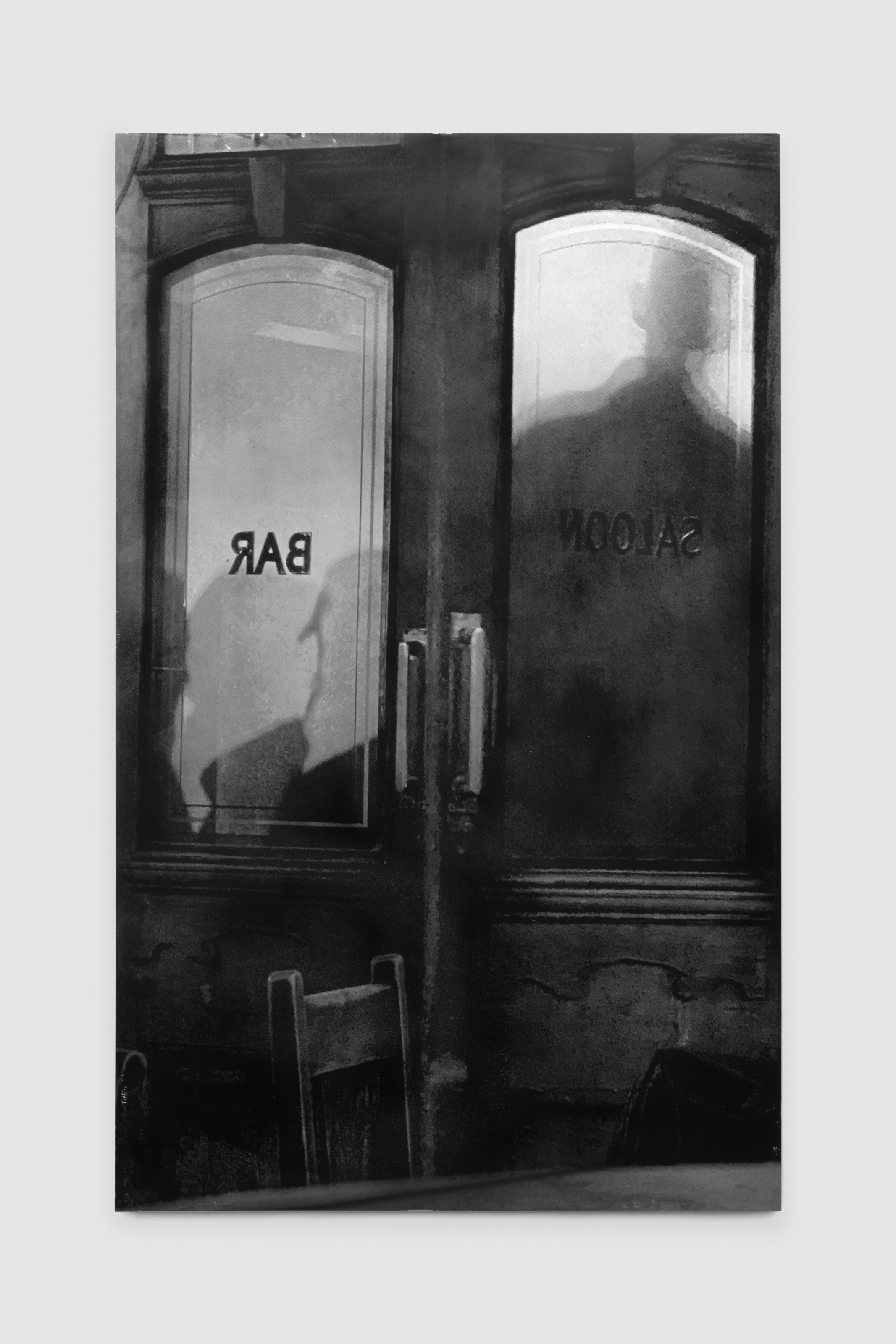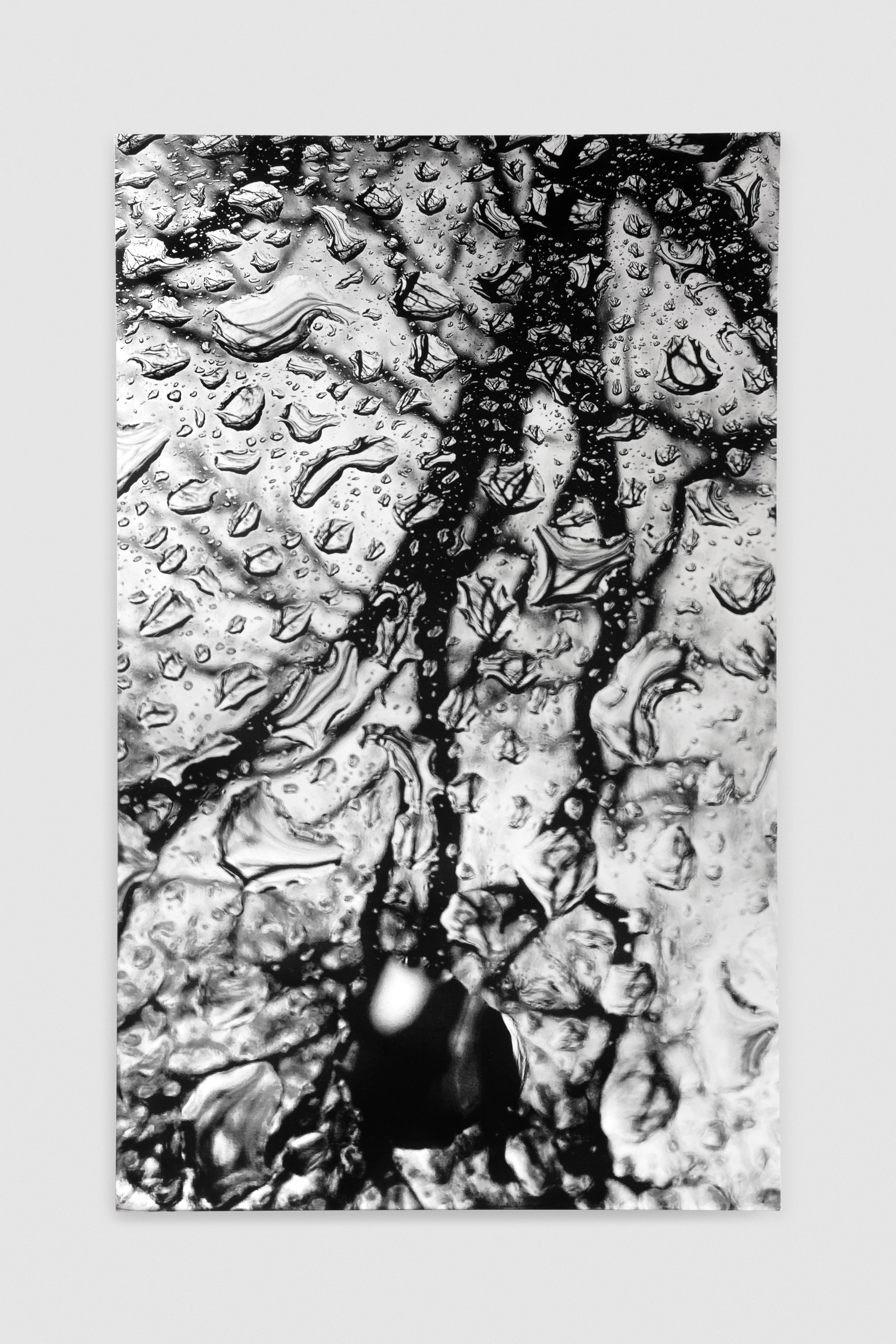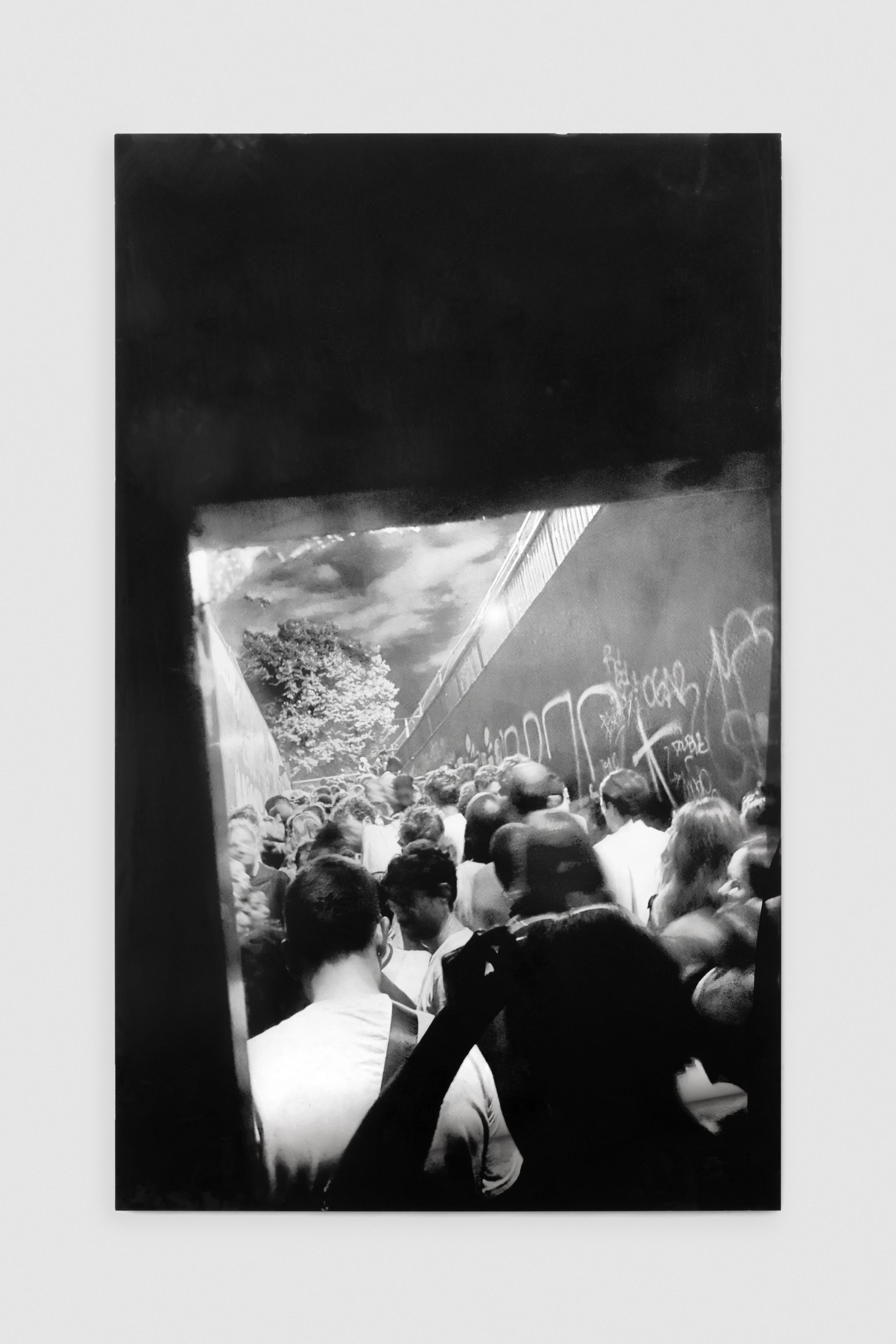Like art, food facilitates connection. In her column ‘Sharing Plates’ Ella Slater sits down for an evening spent at the favourite restaurants of contemporary cultural protagonists for an IRL experience.
I meet the artist Olu Ogunnaike at Theo’s Pizzeria, a casual but chic Neapolitan pizza joint in Camberwell. Ogunnaike, a South Londoner himself, comes here often– very often. “I sat at this table a couple of days ago”, he tells me upon arrival, and once he came here for both lunch and dinner, waiting out the time in-between the two meals by catching up with friends and family. Although it’s usually me who books in advance, Ogunnaike has asked for us to be seated in the snug courtyard out back, and the staff know who I am when I walk through the door. They like the artist here; they’re enthusiastically accommodating when he asks for the off-menu peach lemonade (still marinating ahead of the evening’s dinner rush– I’ve been told it’s good), and they laugh at his jokes. Ashamedly, I’ve fallen into the trap of equating social media prevalence with real personality, and since Ogunnaike is reserved online– he has a tendency to post shows for the first time on Instagram six months after they’ve happened– I hadn’t quite expected him to be as charismatic as he is.

We talk for half an hour before it even occurs to us that we haven’t ordered any food yet– we both choose panuozzos, thin but indulgent pizza-dough sandwiches, and some of the best, garlickiest olives I’ve had in a long time. Our lunch marks the approach of Ogunnaike’s exhibition at Rose Easton, titled ‘Is the soil right?’. The artist hasn’t had a solo show in the city since his graduation from the Royal Academy in 2021, so it feels particularly poignant, especially since it marks what seems to be a rare sustained period of time which he has spent at home. Years ago, after dropping out of his studies in business at the University of Bedfordshire, and then spending time in Nigeria, Ogunnaike returned to London to work as a graphic designer and begin a foundation course at Camberwell College of Art. He then moved to Brighton, to embark on a heavily conceptual BA in Fine Art. “My first crit was learning how to look at a brick wall for three hours and write about it,” he laughingly tells me, but acknowledges the impact the course has had on his practice today. More recently, he’s lived in Bordeaux, France and Essen, Germany, on the occasion of simultaneous institutional shows.

It feels appropriate, then, that Ogunnaike’s practice is so concerned with the material histories of objects and environments, as well as wood (nature) as a repository of memory and human identity; it is nature which transcends background, circumstance and words. “There’s something really salient in a material that has been around as long as we have, in so many different forms,” he tells me. “It was the simplicity of it which really drew me to it, and the idea that we can extract memories from objects.” Ogunnaike gestures towards the table we’re sat on, his regular spot. “This table, for example,” he continues, “I’ve sat on it many a time, and the experiences of people, and wherever they’ve come from, and however their days have been– are entrenched in it.”

I am reminded of ‘Crumbs’, the artist’s aforementioned 2022 institutional show at CAPC Bordeaux. To mark its opening, Ogunnaike invited staff from the museum to join him for a dinner reception around a large wooden table, later burnt using the Japanese wood preserving technique, Shou Sugi Ban, in a symbolic act of endowing a tangible object with intangible memory. ‘Crumbs’ itself was an investigation of Bordeaux’s past, tied up with both the wine industry and colonial history, and the show incorporated local pinewood and sawdust collected from the museum’s beams. A more recent installation at Bristol’s Spike Island took a similar approach, using mud collected from the Avon riverbed, and found steel from a local shipyard, which had recently been the victim of an arson attack and subsequently devastating fire. These site-specific shows are the result of Ogunnaike’s object and material-led ontology. “I really like this idea of material life as a reflection of these legacies of human travel, slavery, migration and labour,” he explains to me.

Ogunnaike’s show at Spike Island also incorporated a series of charcoal screen prints, smaller variants of those which now populate the walls at Rose Easton. ‘Is the soil right?’ pays homage to a feeling of otherness embedded in a place you call home, something which the artist has been thinking more about in the wake of recent far-right rioting which has dogged the UK. “To some extent the show is about growing somewhere,” he explains, “and feeling like you’ve taken all the nutrients from the soil. Once that happens, are you still surrounded by goodness, or is something stopping your growth?” The monumental, mirrored steel on show feels markedly industrial in comparison to Ogunnaike’s other, more organic works– particularly since the scenes they depict are those of metropolitan pub entrances and crowded passageways. Still, they continue to speak to the interconnectedness of human and landscape; existence and environment.
Our lunch ends with Ogunnaike heading to a meeting with the poet and musician James Massiah, to discuss the press release which will accompany the exhibition. He feels it is important to involve one of his friends in the writing of the text, and why not, since he has so many. Later, at the show’s packed opening evening, someone turns to me, gesturing to Ogunnaike, and remarks: “he knows everyone”. There is a one in, one out situation occurring, partly because of the delicacy of the charcoal works, partly because of the vast number of people in attendance. It feels like as much of a scene gathering of London’s creative underground as it is an art world event, and it occurs to me that, though often devoid of figures, Ogunnaike’s art is really about the people who surround him; their communities, their histories, their trauma, and their love.






